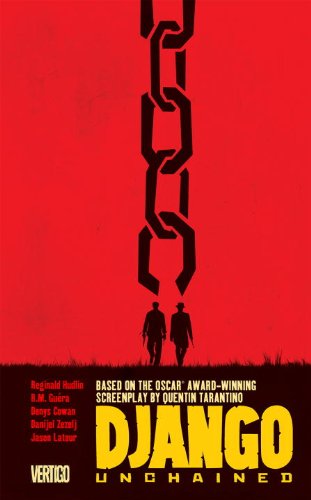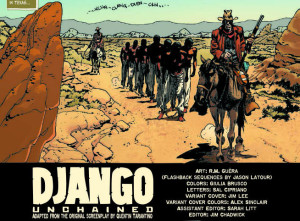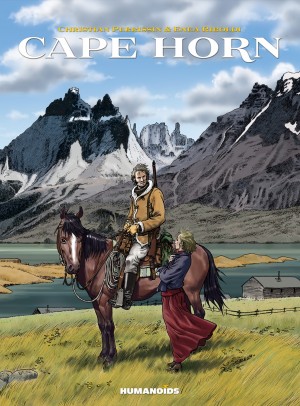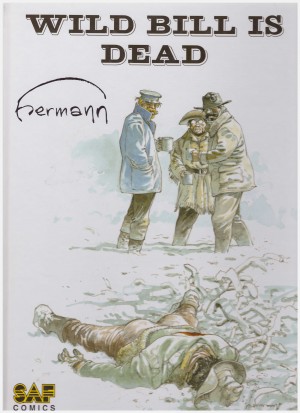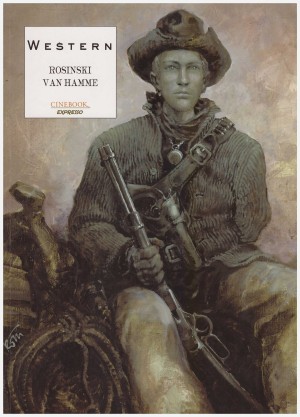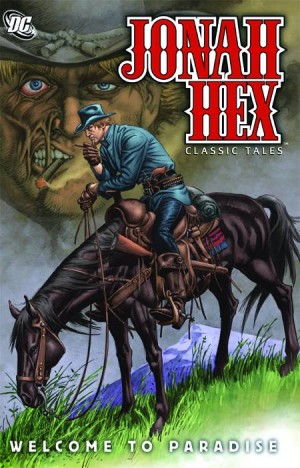Review by Jamie McNeil
Its a bit of a mystery why an Oscar-winning film director would want to release a graphic novel tie-in, except that this is a Quentin Tarantino film and he doesn’t follow conventional norms. In fact he says, in the intro to Django Unchained, western comics are as much an influence on him as film is. What makes this stand-out is Tarantino’s claim of it being his entire unedited script for the film adapted here, a literary Director’s Cut.
Reginald Hudlin, who also produced the film, not only re-tells that narrative well, but makes it stand apart from the film. A lot is recognisable from the dramatised version, but the dialogue benefits from being written down, providing a more cohesive impression.
While you cheer for Django in the feature, there is very little to like about him here. He is angry, bitter, violent and incredibly selfish. He has no interest in rescuing anyone but Broomhilda. Everyone else is helped as an afterthought. The only other person he shows any emotion for is his liberator and friend Dr King Schultz. You can’t cheer Django, but rather stand wondering if he is a hero looking for justice or an executor of vengeance, as in the earlier Django films that influenced Tarantino. Perhaps that was Tarantino’s objective. Slavery is brutal and dehumanising, turning everyone against each other, even people enslaved together.
This graphic novel edition of Django Unchained will obviously always be associated with the film, but there is enough unseen material here to support it on its own, though at times it just doesn’t make sense. It includes scenes cut from the motion picture and while some work, others don’t.
The art is not meant to bear any similarity to the actors (according to Tarantino), but it does happen and the likeness to various actors is uncanny, particularly Jamie Foxx. This avoids a ‘film comic’ feel largely due to the widely varying art styles of R.M. Guera, Jason Latour, Denys Cowan, Danijel Zezelj and John Floyd. Guera, Latour and Cowan have experience with Westerns that contributes to Django having an authentic feel, while Zezelj and Floyd’s styles are well suited to the grit and realism. The difference in styles also adds to the dimension of character perspective. The violence is frighteningly drawn and the whole book has a grimy feel fitting the landscapes and settings. The issues add a nightmarish quality. At what point would the realities of slavery not be a nightmare? The book conveys the depravity of slavery far better than the film, with some visceral and simultaneously breath-taking art.
Django Unchained offers different perspectives on the filmed story. In that Django is a hero for enacting revenge, while here any heroism is highly questionable. He is a slave who is freed and becomes a bounty hunter paid money to kill white folks. In Django’s words, “What’s not to like?” Other film tie-ins often come over as money spinners for blockbusters while Django Unchained has some serious artistic heft, enough for Tarantino to pen a sequel titled Django/Zorro. He seems genuinely interested in presenting the story and seeing where it leads beyond the motion picture. Long may others take this as an example of how to do it right.
